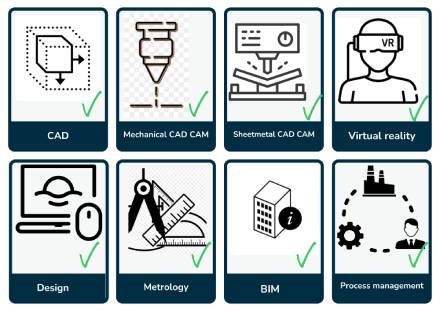- Join our Team
- Resources
-
Account
- |
- Cart
- EN FR
Version 2022.4 of Datakit 2D and 3D converters is released

November 22, 22
With this version, Datakit further enhances interoperability between 3D engineering software, worldwide.
Many changes have been made to Datakit’s data exchange toolkits to facilitate the reading and writing of 2D and 3D data design, visualization and handling, all along the complete life cycle of a product.
These modifications meet the needs of demanding users to get compatibility among their tools.
Different fields of activities are concerned including those historically dedicated to design, CAD, mechanical or sheet metal CAD/CAM, metrology, visualization, rendering, virtual reality, but also construction with the development of building information modeling (BIM) or even the modelling of plants or road infrastructures.
Highlights:
New functionalities of Datakit converting software allow users to speed up the implementation of their projects designed or edited with Catia V5, V6 3D Experience /CGR; SolidWorks or Solid Edge.
Compatibility with new software versions:
Read files from:
- Inventor 3D 2023
- UG NX 2D, 3D, NX 2206, NX 2019, NX 2027
- Creo 9.0 Parametric 2D, 3D, FDT
- Revit 3D 2023
Read and write of Parasolid V35.0 files
Read and write of Ifc files.
About Datakit:
Founded in 1995, Datakit is a worldwide CAD data exchange pure player, fully involved since then in 3D software interoperability: conversion of native formats, normalization.
Its best advantage is the consideration of the overall architecture of the model, and not only its geometrical definition. Actually, Datakit CAD translators allow to read and write dozens of native or neutral formats, 2D, 3D, including non-geometrical data like features, PMI...
Datakit customers are software companies that integrate its data exchange libraries, but also end-users or manufacturers who use Datakit’s converters to read or write data.